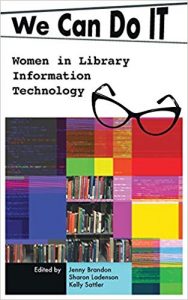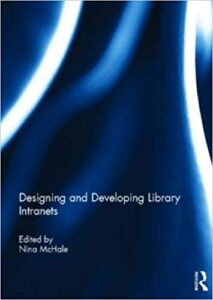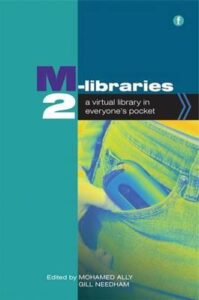Book Chapters
“Reframing and Reimagining the Value of Service”
 About: “Reframing and Reimagining the Value of Service” is the name of the chapter that I wrote with Emily Puckett Rodgers and Meghan Sitar for the the book, Deconstructing Service in Libraries: Intersections of Identities and Expectations, edited by Veronica Arellano Douglas and Joanna Gadsby. The book was published in December 2020 by Library Juice Press and is in the Litwin Books Series on Gender and Sexuality in Information Studies, with Emily Drabinski as Series Editor.
About: “Reframing and Reimagining the Value of Service” is the name of the chapter that I wrote with Emily Puckett Rodgers and Meghan Sitar for the the book, Deconstructing Service in Libraries: Intersections of Identities and Expectations, edited by Veronica Arellano Douglas and Joanna Gadsby. The book was published in December 2020 by Library Juice Press and is in the Litwin Books Series on Gender and Sexuality in Information Studies, with Emily Drabinski as Series Editor.
Book Abstract: Research into the construction of librarians’ professional identities indicates a strong emphasis on our work as service providers, from both within the profession and the larger communities in which we exist. This collection of work by practicing librarians offers a historical-cultural context for the ethos of service in libraries and critically examines this professional value as it intersects with gender, sexuality, race and ethnicity, class, and (dis)ability. Deconstructing Service in Libraries: Intersections of Identities and Expectations explores the ways in which an ethic of service creates, stagnates, and destructs librarians’ professional identities and sense of self; analyze the power structures, values, and contexts that influence our personal, professional, and institutional conceptions of service in libraries; and deconstruct the the costs and consequences of negotiating personal identity with professional values. Inspired by Roma Harris’ Librarianship: The Erosion of a Woman’s Profession (1992), this collection seeks to rework the idea of service in libraries into a more feminist, empowering foundation and suggest alternative theories and values in which to ground our professional practice.
Citation: Vacek, Rachel, Meghan Sitar, and Emily Puckett Rodgers. “Reframing and Reimagining the Value of Service.” Deconstructing Service in Libraries: Intersections of Identities and Expectations. Edited by Veronica Arellano Douglas and Joanna Gadsby. (Sacramento: Library Juice Press, 2020).
“How Two Women Embraced Their Path to IT Management”
 About: “How Two Women Embraced Their Path to IT Management” is the name of the chapter that I wrote with Kat Hagedorn for the the book, We Can Do I.T.: Women in Library Information Technology, edited by Jenny Brandon, Sharon Ladenson, and Kelly Sattler. It was published in July 2018 and is in the Litwin Books Series on Gender and Sexuality in Information Studies, with Emily Drabinski as the Series Editor.
About: “How Two Women Embraced Their Path to IT Management” is the name of the chapter that I wrote with Kat Hagedorn for the the book, We Can Do I.T.: Women in Library Information Technology, edited by Jenny Brandon, Sharon Ladenson, and Kelly Sattler. It was published in July 2018 and is in the Litwin Books Series on Gender and Sexuality in Information Studies, with Emily Drabinski as the Series Editor.
Book Abstract: Does gender play a role in library information technology (I.T.)? For the last several decades, libraries have primarily employed women, whereas I.T. jobs have been held by men. What happens when the two collide? What is it like for women who are working for I.T. within the library? Has it changed over time? Through personal narratives, we explore these questions and seek to provide guidance and encouragement for women and men in library I.T., those pursuing a career in library I.T., and library management. The collection includes themes concerning “Imposter Syndrome,” career trajectory, experiences of sexism and biases. Contributors also offer advice and encouragement to those entering or already in the field. Examples of positions held by the contributors include managers, web developers, system librarians, programmers, and consultants. This collection provides a voice for women in library I.T., bringing their experiences from the margins to the center, and encouraging conversation for positive change.
Citation: Vacek, Rachel, and Kat Hagedorn. “How Two Women Embraced Their Path to IT Management.” We Can Do I.T. : Women in Library I.T. Edited by Jenny Brandon, Sharon Ladenson, and Kelly Sattler. (Sacramento: Library Juice Press, 2018).
“Library and Information Technology Association (LITA)”
 About: While I was was President of the Library & Information Technology Association (LITA) between 2014-2015, I updated a very old entry on LITA that was to be published in the 4th Edition of the Encyclopedia of Library and Information Sciences. It was my first experience in writing content for an encyclopedia, and I didn’t realize at the time that the editing review process would take so long. The seven volume collection (6,106 pages) wasn’t published until 2018.
About: While I was was President of the Library & Information Technology Association (LITA) between 2014-2015, I updated a very old entry on LITA that was to be published in the 4th Edition of the Encyclopedia of Library and Information Sciences. It was my first experience in writing content for an encyclopedia, and I didn’t realize at the time that the editing review process would take so long. The seven volume collection (6,106 pages) wasn’t published until 2018.
Book Description: The Encyclopedia of Library and Information Sciences, now in its fourth edition, compiles the contributions of major researchers and practitioners and explores the cultural institutions of more than 30 countries. This major reference presents over 550 entries extensively reviewed for accuracy in seven print volumes or online. The new fourth edition, which includes 55 new entires and 60 revised entries, continues to reflect the growing convergence among the disciplines that influence information and the cultural record, with coverage of the latest topics as well as classic articles of historical and theoretical importance.
Citation: Vacek, Rachel. “Library and Information Technology Association (LITA).” Encyclopedia of Library and Information Sciences, edited by John McDonald, and Michael Levine-Clark. (Boca Raton: CRC Press, 2018): 2775-2781. http://hdl.handle.net/2027.42/146755 [post-print version].
“Intranet 2.0 from a Project Management Perspective”
 About: I wrote the article, “Intranet 2.0 from a Project Management Perspective,”
About: I wrote the article, “Intranet 2.0 from a Project Management Perspective,”
with Paul Sharpe for a special issue of the Journal of Web Librarianship, and that special issue was later published as a book called Designing and Developing Library Intranets, edited by Nina McHale.
Chapter Abstract: Library intranets require flexibility and efficiency and enhance the internal communication and collaborative nature of creating and organizing the institution’s information. At the University of Houston Libraries, the focus was on public services, so little attention was given to the intranet—the tool every department relied on for quick access to their content. Text-heavy, static Web pages with poor organization and outdated information made the site unusable. In 2008, the University of Houston Libraries assembled a team to begin the considerable task of redesigning the intranet with Drupal, a popular open source content management system that would allow for interactive information sharing, user-centered design, and new ways of collaboration. This article outlines on the overall project management of the intranet redesign process, including methods used for collecting staff feedback, evaluating existing and potential content, creating a new information architecture focused on departments and committees, establishing new internal communication channels, creating staff enthusiasm and buy-in, and training the entire library staff.
Citation of Article: Sharpe, Paul A., and Rachel E. Vacek. “Intranet 2.0 from a Project Management Perspective.” Journal of Web Librarianship, 4:2/3 (2010): 239-249. http://dx.doi.org/10.1080/19322909.2010.500860
Citation of Book Chapter: Sharpe, Paul A., and Rachel E. Vacek. “Intranet 2.0 from a Project Management Perspective.” Designing and Developing Library Intranets. Edited by Nina McHale. (London: Routledge, 2013).
“Piloting Mobile Services at UH Libraries”
 About: In the fall of 2008, a small group of librarians at the University of Houston (UH) Libraries embarked on a pilot project to develop, deploy, and evaluate mobile services for library users. The overall objective of the project was to discover how mobile devices could be used to enhance services currently provided by the library and, concurrently, to investigate mobile technology efforts at other libraries. This book chapter is called, “Piloting Mobile Services at UH Libraries.”
About: In the fall of 2008, a small group of librarians at the University of Houston (UH) Libraries embarked on a pilot project to develop, deploy, and evaluate mobile services for library users. The overall objective of the project was to discover how mobile devices could be used to enhance services currently provided by the library and, concurrently, to investigate mobile technology efforts at other libraries. This book chapter is called, “Piloting Mobile Services at UH Libraries.”
Citation: Coombs, Karen, Veronica Arellano, Miranda Bennett, Robin Dasler, and Rachel Vacek. “Piloting Mobile Services at UH Libraries.” M-libraries 2: A Virtual Library in Everyone’s Pocket. Edited by Mohamed Ally and Gill Needham. (London: Facet Publishing, 2010).
Articles
“Hitting the Road towards a Greater Digital Destination: Evaluating and Testing DAMS at the University of Houston Libraries”
Abstract: Since 2009, tens of thousands of rare and unique items have been made available online for research through the University of Houston Digital Library. Six years later, the Libraries’ new digital initiatives call for a more dynamic digital repository infrastructure that is extensible, scalable, and interoperable. The Libraries’ mission and the mandate of its strategic directions drives the pursuit of seamless access and expanded digital collections. To answer the calls for technological change, the Libraries Administration appointed a Digital Asset Management System (DAMS) Implementation Task Force to explore, evaluate, test, recommend, and implement a more robust digital asset management system. This article focuses on the task force’s DAMS selection activities: needs assessment, systems evaluation, and systems testing. The authors also describe the task force’s DAMS recommendation based on the evaluation and testing data analysis, a comparison of the advantages and disadvantages of each system, and system cost. Finally, the authors outline their DAMS implementation strategy comprised of a phased rollout with the following stages: system installation, data migration, and interface development.
Citation: Wu, Annie, Santi Thompson, Rachel Vacek, Andy Weidner, and Sean Watkins. “Hitting the Road towards a Greater Digital Destination: Evaluating and Testing DAMS at the University of Houston Libraries.” Information Technology and Libraries, 35:2 (2016): 5-18. http://dx.doi.org/10.6017/ital.v35i2.9152
“Streamlining Data for Cross-Platform Web Delivery”
Abstract: Smartphone users expect the presentation of Web sites on their mobile browsers to look and feel like native applications. With the pressure on library Web developers to produce app-like mobile sites, there is often a rush to get a site up without considering the importance of reusing or even restructuring the data driving the Web sites. An additional challenge is the content maintenance required of any Web site, regardless of platform, underscoring the advantage of pulling content from other systems to decrease redundancy. This article highlights case studies from two large research universities, examines how each one is streamlining its data for multiple Web-based platforms, and discusses how to work toward making data more flexible so content is delivered from single source points rather than duplicated on individual delivery platforms.
Citation: Watkins, Sean, Jason Battles, and Rachel Vacek. “Streamlining Data for Cross-Platform Web Delivery.” Journal of Web Librarianship, 7:1 (2013): 95-108. http://dx.doi.org/10.1080/19322909.2013.748393
“Improving the Drupal User Experience”
Abstract: Drupal is a powerful, but complex, Web Content Management System, being adopted by many libraries. Installing Drupal typically involves adding additional modules for flexibility and increased functionality. Although installing additional modules does increase functionality, it inevitably complicates usability. At the University of Houston Libraries, the Web Services department researched what modules work well together to accomplish a simpler interface while simultaneously providing the flexibility and advanced tools needed to create a successful user experience within Drupal. This article explains why particular modules were chosen or developed, how the design enhanced the user experience, how the CMS architecture was created, and how other library systems were integrated into Drupal.
Citation: Vacek, Rachel, Derek Keller, Christina Morris, and Sean Watkins. “Improving the Drupal User Experience.” Code4Lib Journal, 12 (2010). http://journal.code4lib.org/articles/4578
Conference Proceedings
“Search, Report, Wherever You Are: A Novel Approach to Assessing User Satisfaction with a Library Discovery Interface”
Abstract: In an effort to assess user experience and satisfaction with searching the University of Michigan Library catalog, we developed an online data collection tool that captured both data on user searches and their reports on various aspects of the search experience. We successfully piloted the tool, demonstrating both the usefulness of the assessment data and the readiness of the tool for use with a larger group of campus stakeholders. We focus in this paper on the features and deployment of the data collection tool, and we also discuss our pilot phase findings and our plan to use the tool in future assessment work.
Citation: Smith, Craig, Rachel Vacek, and Kenneth J. Varunum. “Search, Report, Wherever You Are: A Novel Approach to Assessing User Satisfaction with a Library Discovery Interface” Proceedings of the Library Assessment Conference. 2020. https://www.libraryassessment.org/2020-proceedings/
“Diffusing Organizational Change through Service Design and Iterative Assessment”
Abstract: At the University of Michigan Library, dozens of librarians and staff are engaged in a series of activities to reimagine the ways our organization designs and implements our services. Between 2016 and 2017, we collaborated with brightspot strategy to develop a service philosophy, framework, and principles to help us begin the process to transform our physical and digital spaces to better represent our expertise, collections, and tools, and to meet the evolving needs of our academic community today and tomorrow. As we look to transform our spaces to serve the needs of our research community, we are taking care to ensure that whatever form our buildings and web presence take, will follow the function and intent of our services.
Our efforts in this work are collaborative and distributed in nature, diffusing the shift in design and evaluation across the organization. With it, we aim to facilitate organizational change that puts our users at the center of service design and delivery. It also fundamentally recognizes that our departments play a role in supporting the academic needs of our faculty, students, and staff at the University of Michigan.
This work is structured by established approaches in design thinking and user-centered design. Multiple teams of librarians and staff are applying this approach to redesign services. Topics include consultation, digital scholarship, staff innovation, citation management, and developing a persona-based toolkit that any staff across our organization may use in efforts to design new or make improvements to existing services. While each team is using the same overall approach to its service design work, the application and outcomes are unique to each domain. Within four design cycles, each team engages in a retrospective to review the process, the impact of the work, and consider its potential effects on our organizational structures.
Additionally, the service design efforts support our organization’s adoption of an assessment-driven mindset through embedding evaluation into our processes. Once the service design phase is complete, each team will generate a series of pilots or prototypes to test aspects of their designs in the context of our organization. In the Summer and Fall of 2018, teams will implement those pilots and prototypes, testing their ability to scale effectively or meet our programmatic and mission-based goals yielding a series of small-scale, but impactful activities or processes that will further diffuse the design-thinking approach throughout our organization. Each of these sets of activities will be assessed before moving onto future stages of the work. We will also evaluate how they help us enact our service philosophy, framework, and principles in the practice of our everyday work.
Ultimately this work will yield a culture shift within our organization enabling us to embrace a user-centered, service-based approach to how we develop services, and how we expect to collaborate and connect with colleagues within our library and academic community. It will also enable us to embed assessment practices into various facets of our work, from the beginning stages of design through its testing and into implementation at scale.
Citation: Vacek, Rachel, Meghan Sitar, and Emily Puckett Rodgers. “Diffusing Organizational Change through Service Design and Iterative Assessment.” Proceedings of the Library Assessment Conference. 2018. http://hdl.handle.net/2027.42/151766
“How to Build a Better Mousetrap: Developing an Easy, Functional ERM”
Abstract: The need for various stakeholders in the library to access licensing information is critical when various departments are working with electronic resources. Managing these electronic resources can be a daunting task for those who have little experience working in the Resource Manager interface. This paper offers the process of developing an easy, functional ERM that is user-friendly. It offers the steps that electronic resource coordinators at the University of Houston took to create a new resource called the Electronic Resources License Repository (ERLR) and the feedback they received. The paper serves as inspiration for other library coordinators who wish to create similar resources.
Citation: Brett, Kelsey, Jeannie Castro, and Rachel Vacek. “Building a Better Mousetrap: Developing an Easy, Functional ERM.” Proceedings of the Charleston Library Conference. 2012. http://dx.doi.org/10.5703/1288284315138
Columns in Information Technology and Libraries
 When I was President of the Library & Information Technology Association (LITA) between 2014-2015, I wrote three columns for LITA’s online and open-access journal, Information Technology and Libraries.
When I was President of the Library & Information Technology Association (LITA) between 2014-2015, I wrote three columns for LITA’s online and open-access journal, Information Technology and Libraries.
Vacek, Rachel. “President’s Column: Making an Impact in the Time That is Given to Us.” Information Technology and Libraries. 34/2 (2015): 3-4. http://dx.doi.org/10.6017/ital.v34i2.8804
Vacek, Rachel. “President’s Message: Twitter Nodes to Networks: Thoughts on the #litaforum.” Information Technology and Libraries. 33/4 (2014): 1-9. http://dx.doi.org/10.6017/ital.v33i4.5857
Vacek, Rachel. “President’s Message: UX Thinking and the LITA Member Experience.” Information Technology and Libraries. 33/3 (2014): 1-4. http://dx.doi.org/10.6017/ital.v33i3.5666